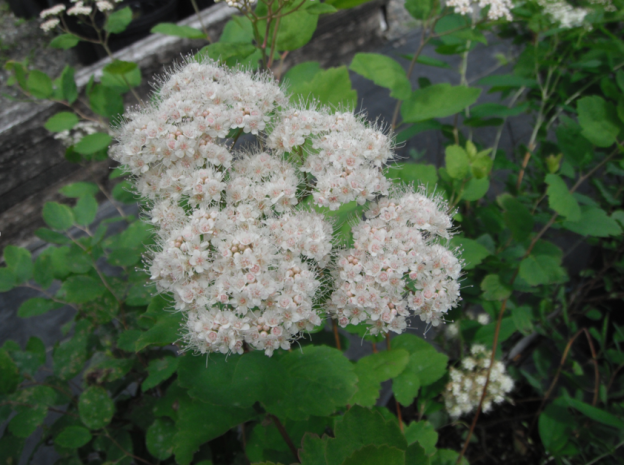Shinyleaf Spiraea The Rose Family–Rosaceae
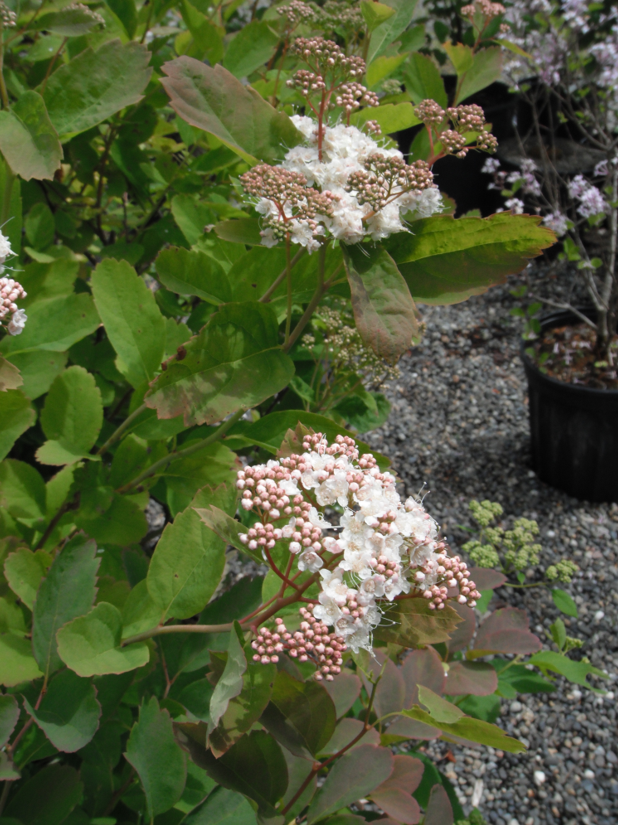 Spiraea lucida Douglas ex Greene
Spiraea lucida Douglas ex Greene
(spy-REE-uh LOO-sih-duh)
Names: The word Spiraea comes from a Greek plant that was commonly used for garlands. Spiraeas are collectively known as Meadowsweets. Shinyleaf Spiraea was formerly considered a variety of Birchleaf Spiraea, Spiraea betulifolia, It is sometimes called White Spiraea or White Meadowsweet. Lucida means shining.
Relationships: There are about 80-100 species of spiraea in the temperate regions of the northern hemisphere-the majority in eastern Asia. Many are grown for ornamental landscaping and there are several cultivated varieties, mostly of the Japanese species.
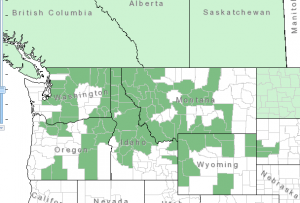
Distribution of Shinyleaf Spiraea from USDA Plants Database
Distribution: It is found from British Columbia to Oregon from the foothills of the Cascades, through the Rocky Mountains, eastward to Saskatchewan and Minnesota.
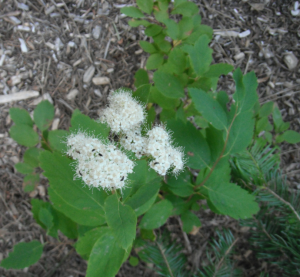 Growth: Shinyleaf Spiraea grows only to about 1-3 ft. (30-90 cm). It spreads by rhizomes and often grows in large colonies.
Growth: Shinyleaf Spiraea grows only to about 1-3 ft. (30-90 cm). It spreads by rhizomes and often grows in large colonies.
Habitat: It grows in open forests and on dry, rocky slopes; from foothills to wetter forests at higher mountain elevations. Wetland designation: Tentative FAC*, It is equally likely to occur in wetlands or non-wetlands.
Diagnostic Characters: Its leaves are egg-shaped, doubly-toothed past the middle; bright green above, paler below. White flowers are borne in flat-topped clusters.
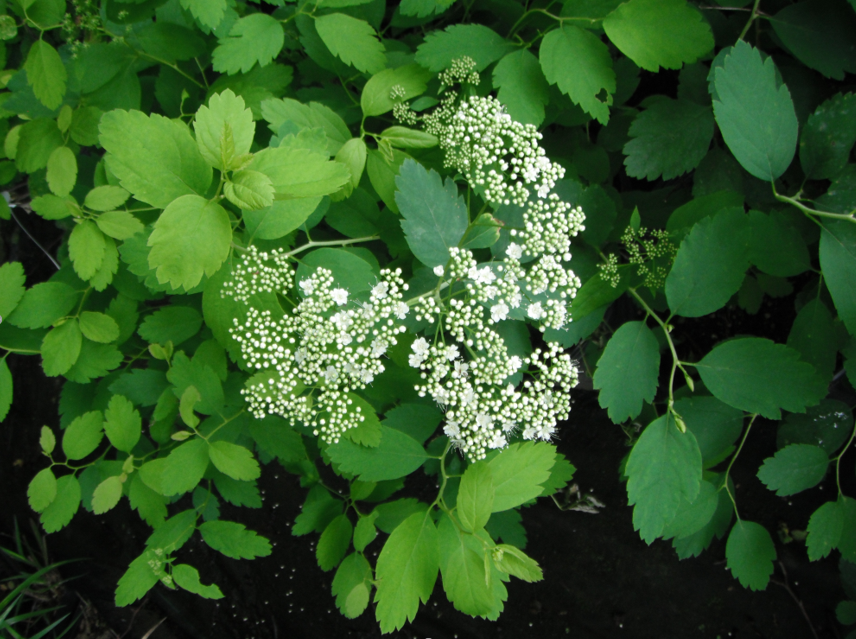
In the Landscape: Like many spiraeas, this shrub is charming in a landscape and is especially useful when a smaller shrub is desired. It has great potential for mixing with Subalpine Spiraea in borders or foundation plantings.
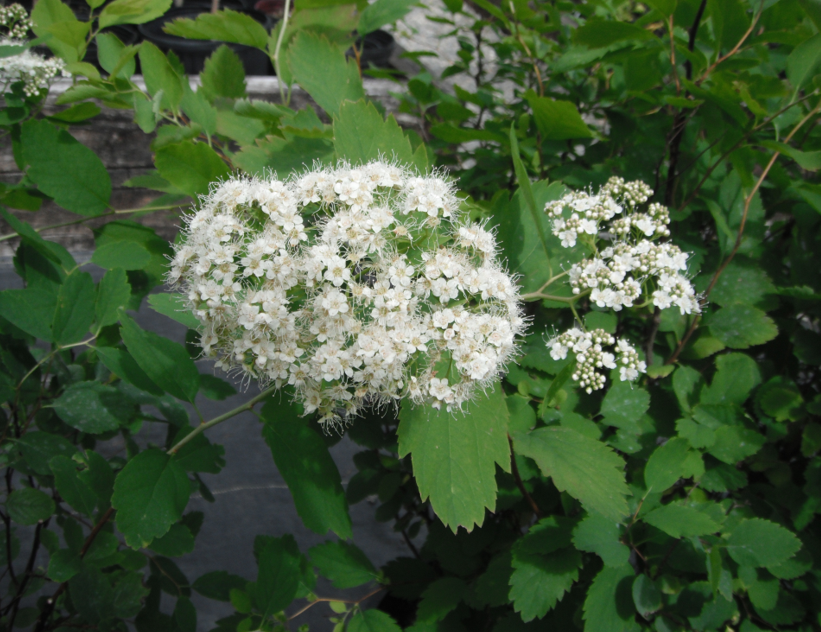
Phenology: Flowers:: May- July. Seasonal development of Shiny Spirea varies due to
temperature differences between elevational sites.
Propagation: A 60 day cold, moist stratification. of seeds is recommended but germination may occur without a stratification treatment. Cuttings also may be taken in early to mid June.
Use by People: A tea, made from branches, leaves or roots, was mostly used to treat abdominal and menstrual pains by natives.
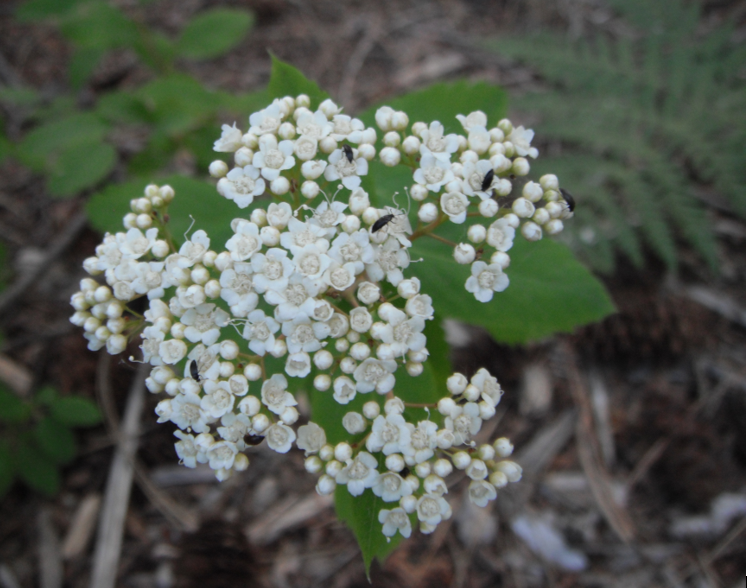
Insects on Shiny Spiraea inflorescence
Use by Wildlife: Shiny spiraea is considered a poor forage species and also does not provide good cover. But is possibly a good species for pollinators such as butterflies.
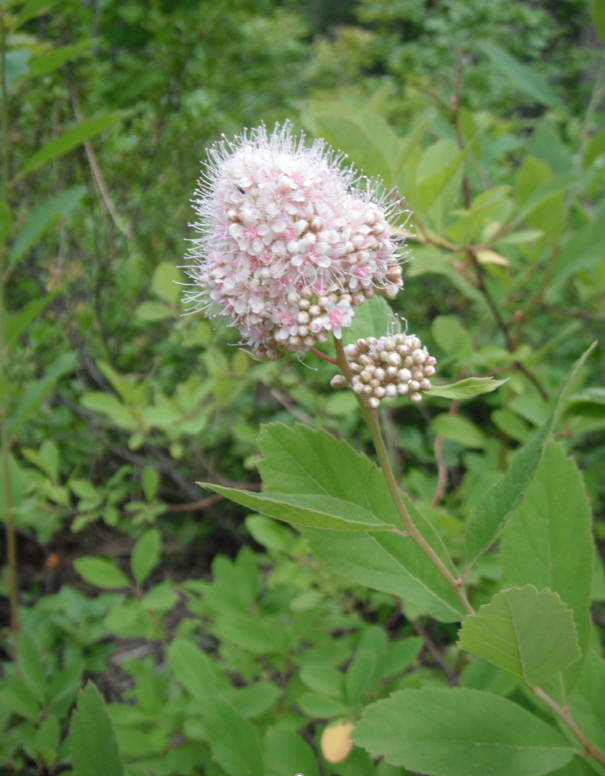 Pyramidal Spiraea, Spiraea x pyramidata, is a naturally occurring hybrid of S. betulifolia (lucida) and S. douglasii. It is intermediate to both of its parents, growing 4-5 feet (130-160cm) with flowers in pyramidal clusters, white to pale pink.
Pyramidal Spiraea, Spiraea x pyramidata, is a naturally occurring hybrid of S. betulifolia (lucida) and S. douglasii. It is intermediate to both of its parents, growing 4-5 feet (130-160cm) with flowers in pyramidal clusters, white to pale pink.
Links:
Consortium of Pacific Northwest Herbaria
WTU Herbarium Image Collection, Plants of Washington, Burke Museum
E-Flora BC, Electronic Atlas of the Flora of British Columbia
Ladybird Johnson Wildflower Center
USDA Forest Service-Fire Effects Information System
Native Plants Network, Propagation Protocol Database
Native American Ethnobotany, University of Michigan, Dearborn

